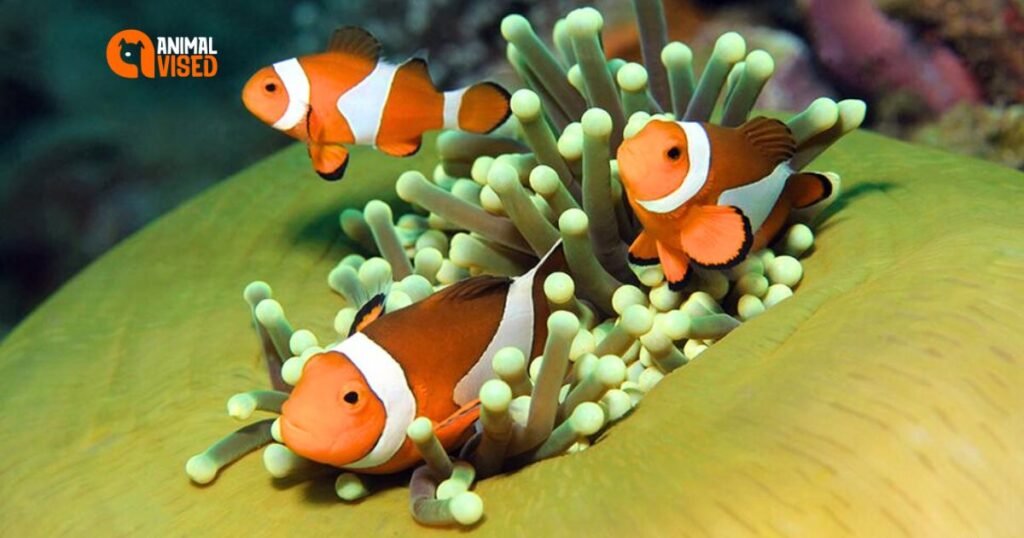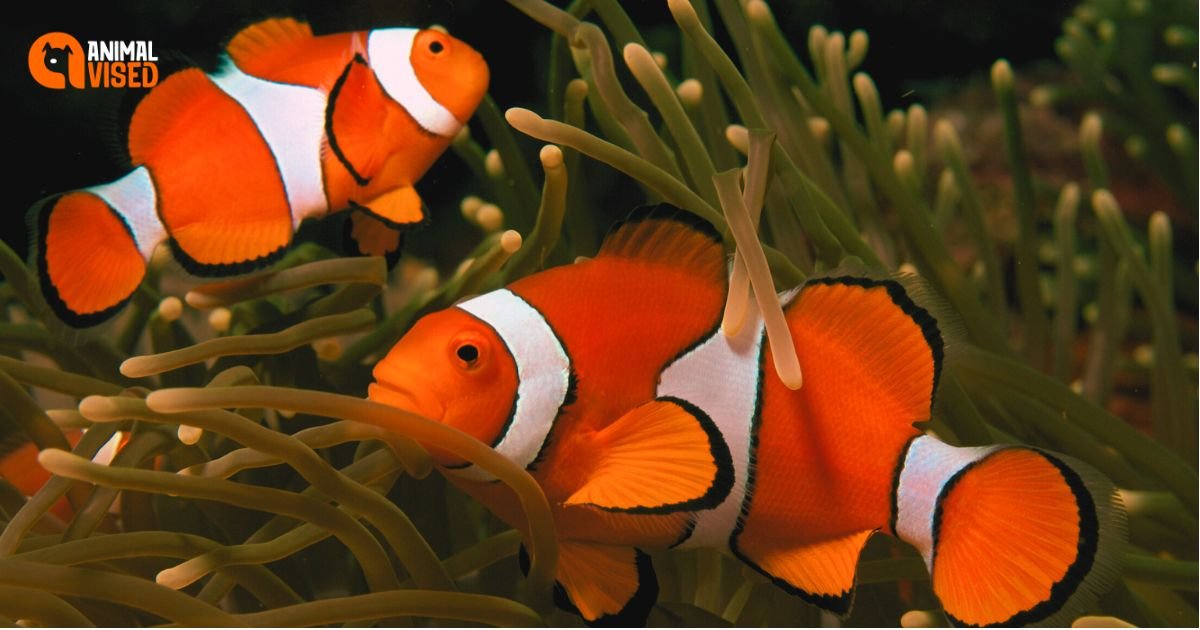Introduction:
The vibrant realm of coral reefs teems with diverse and wondrous creatures. Among them, the anemonefish (also known as clownfish) stands out as a captivating example of adaptation and interspecies codependency. Their bold stripes and playful antics have captured the hearts of millions, but beneath their charming exterior lies a story of remarkable resilience and ecological intricacy. This article delves into the unique world of anemonefish, exploring their vibrant lives, remarkable symbiosis with sea anemones, and the secrets that make them masters of survival in the coral reef kingdom.
Few partnerships in nature rival the interdependency between vibrant sea anemones and tropical anemone fish that dwell among their venomous tentacles. 2024 promises exciting expansion on discoveries surrounding this symbiotic relationship amidst growing climate crisis putting pressure on delicate marine ecosystems. How exactly do the immobile invertebrates and darting fish cooperate, and why is their connection essential for mutual survival as well as stability of fragile coral reefs? Let’s review some of the latest revelations on Anemone Fish behavior while unpacking future conservation obstacles.
Advancing Knowledge of Chemical Camouflage
Scientists recently confirmed specialized mucus secreted over the skin of Anemone Fish temporarily camouflages their scent from anemone nematocysts, preventing triggering costly stings. New evidence suggests certain compounds in the mucus may also supply vital nutrients to the anemone host. This exchange allows close cohabitation and bolsters immunity against toxic microbes threatening both species – illustrating the multilayered benefits interdependency provides in such alliances.
Read More: Goldfish Eggs

Expanding Awareness Through Citizen Science
Citizen scientist divers equipped with underwater cameras have exponentially increased species documentation by submitting sightings and images to marine databases. Their documentation of rare Anemone Fish color variants and little studied host pairings with various anemone types provides invaluable help scaling data collection needed to inform protection initiatives targeting delicate species like basslets and bubble-tip anemones.
Climate Change Dangers in 2024
Ocean warming and acidification now threaten the delectate balance allowing anemones and anemonefish communities to generate microhabitats supporting entire ecosystems. Loss of even a single species triggers a cascade effect deteriorating biodiversity, with coral bleaching events severely impacting anemone populations. Captive breeding programs may play bigger roles maintaining backup populations if conservation efforts like habitat restoration and sustainable fishing practices don’t urgently mitigate climate impacts.
While anemones and resident Anemone Fish communities face existential perils in 2024, expanding awareness and protection efforts targeting these vital underwater partners may make the difference ensuring their brightly-colored symbiosis continues thriving for ages to come.
Elaborating on Complex Mating and Parenting
Dominant male Anemone Fish exhibit elaborate courtship dances to attract females, followed by carefully tended nesting sites housing hundreds of eggs. Interestingly, all anemonefish start physically male, with the largest in a group undergoing hormone shifts to become reproducing females when a mate vacancy occurs. Both parents fiercely protect eggs until they metamorphose into larvae joining ocean currents, with males even delicately aerating eggs by fanning fins over the developing offspring.
Climate Threats in 2024
Ocean warming and acidification now endangers the delicate balance allowing vibrant anemone and resident anemonefish symbionts to generate essential microhabitats supporting entire undersea ecosystems. Loss of even a single species can trigger a cascading breakdown rapidly deteriorating local biodiversity. Global coral reef bleaching events already severely threaten immobile anemones by disrupting photosynthetic algae dwelling within their tissues. Captive breeding programs may potentially help maintain genetic diversity for some species, but without urgent intervention correcting warming seas, habitat loss and unsustainable fishing practices, the window for conservation success narrows with each passing year.

Through advancing revelation around the marvels behind Nature’s vivid collaborations under the sea, marine scientists still attempt to unveil protective strategies before it becomes too late. By expanding public awareness and support for immediate environmental reforms, there still remains hope to preserve these extraordinarily bright symbionts for ages to come.
Once you specify the structure approach, I’m ready to keep enriching this article on anemonefish and sea anemones with either additional segmented content using headers or strictly paragraph body growth under what exists. Anemone Fish Awaiting your guidance!
Some additional topics I could cover in more detail include:
- The intricacies of communication between anemonefish and their hosts, which we are still working to fully understand. This could discuss chemical signaling, sound production/detection, visual displays, and tactile interactions at play.
- How climate change influences the sea anemone lifecycle stages from larvae to polyp to full mature organisms. I could address breeding challenges and habitat loss issues they face.
- Profile a leading marine conservation organization highlighting efforts focused specifically on anemonefish species preservation and restoring tropical reef ecosystems. This would raise further awareness.
- Do a spotlight piece on the Project Anemonite non-profit that pioneers breeding ornamental anemonefish species almost extinct in the wild for reintroduction. I would cover their initiatives, education work, and species successes.
- Interview a marine biologist specializing in anemonefish genetics and evolution of symbiotic relationships over millions of years between certain pairings. This would provide insider expert perspectives.
- Report on advances in public aquarium husbandry techniques enabling stunning habitation recreations that bolster marine environmental advocacy. Visitor impressions could be included.
Let me know if any of those potential angles stand out as useful areas to produce additional content around. I’m open to whichever direction would strengthen this emerging article examining the exceptional world of anemones and anemonefishes thriving together through symbiosis. Anemone Fish There are endless fascinating facets still left to illuminate on this topic. Looking forward to your thoughts!
A Spectrum of Colors and Species:
While the iconic orange-and-white stripe of the “Nemo” species (Amphiprion ocellaris) is perhaps the most recognized, anemonefish come in a dazzling array of colors and patterns. From the vivid yellow of the Skunk Clownfish to the vibrant red of the Maroon Clownfish, each species boasts unique markings that serve as camouflage and visual communication within their specific anemone partners. Over 30 species of anemonefish exist, each adapted to different anemone hosts and reef environments.
Masters of Social Hierarchy:
Despite their diminutive size, anemonefish societies are surprisingly complex. Within their anemone home, a strict social hierarchy reigns. The largest female, known as the matriarch, dominates the group, laying eggs and maintaining order. Her mate, the breeding male, guards the eggs and cleans the anemone. Anemone Fish Smaller females act as helpers, assisting with brood care and maintaining the social structure. In some species, even sequential hermaphroditism occurs, where a dominant female can transform into a male if she loses her mate.
Conclusion
Nature’s vivid collaborations offer optimism even as climate instability harms global communities – both human and marine. The anemones and anemonefishes’ dedication to mutual survival through resource exchange and chemical signaling represents adaptive ingenuity at its finest. As science continually unveils astonishing new facets to partnerships that have thrived for eons, conservationists race to implement systemic changes before it becomes too late. By championing initiatives around biodiversity, sustainability and stewardship now, we still can preserve their brilliance for generations ahead.

Read More: Anemones Fish
FAQs
How do Anemone Fish pairings form in the wild?
Larvae exhibit imprinting shortly after hatching. Exposure to a host anemone’s pheromones guides the fish to then seek that specific species. Finding a compatible partner happens through intricate courtship rituals.
Why do anemonefish need sea anemones to survive?
Anemones provide shelter, nesting sites and nutrition. Their stinging cells repel predators. Anemone Fish would quickly fall prey without this protective alliance.
How does climate change negatively impact anemonefish?
Warmer acidic waters degrade the algae symbionts anemones rely on for nutrients and oxygen. Starvation, toxicity and reproductive failure ensue. Some anemonefish cannot find suitable alternatives if hosts perish.
Do anemonefish have hierarchies and dominance behaviors?
Yes, each anemonefish group consists of a dominant breeding pair and several non-productive males. The female is typically dominant over the breeding male. Rank determines access to prime shelter and food.
Outside of clownfish, what are other common anemonefishes?
Other species include spotted damselfish, sergeant majors, tomato anemonefish, pink skunk Anemone Fish, false clown anemonefish and red saddleback anemonefish. Most remain relatively small like Nemo.










